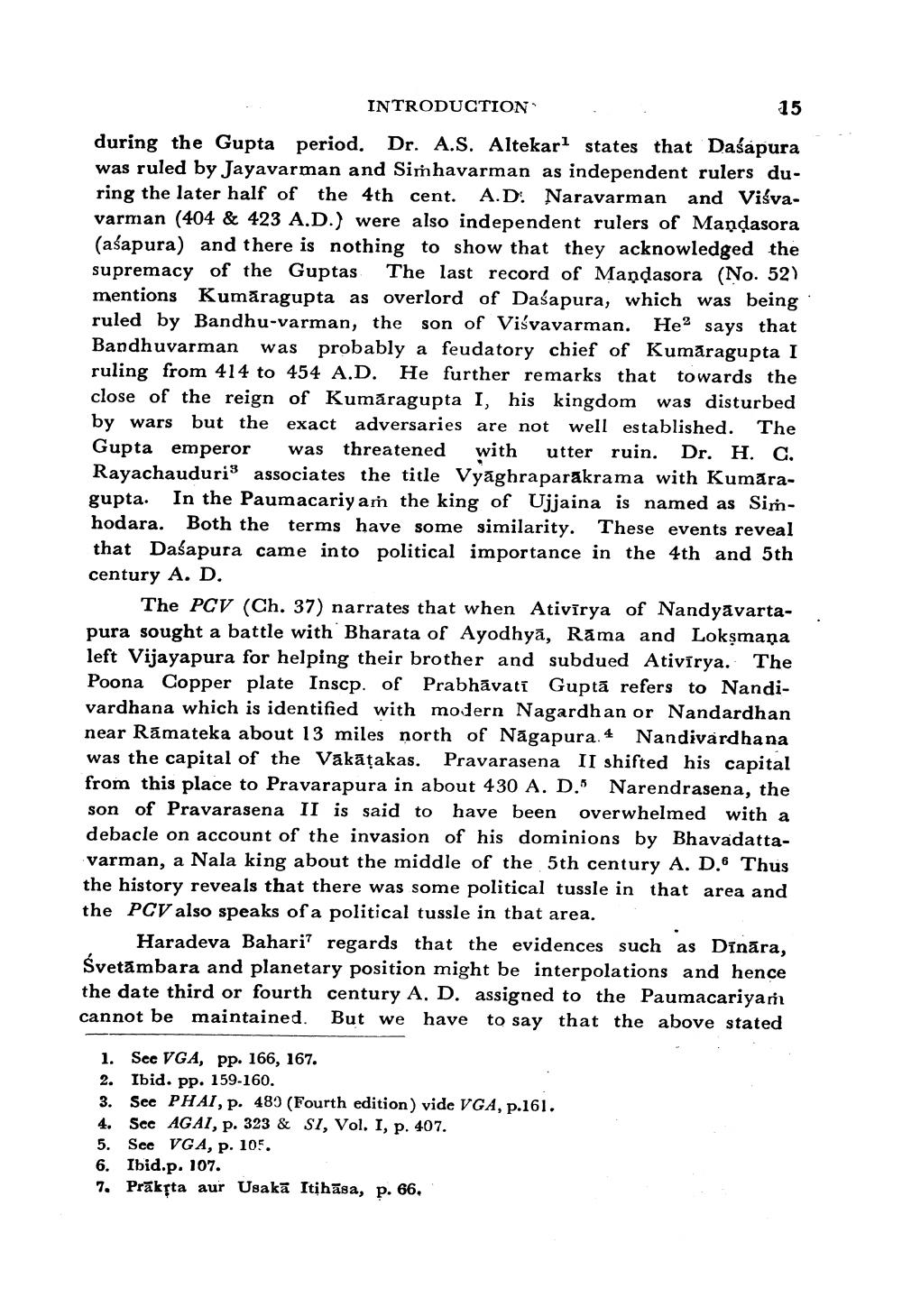________________
INTRODUCTION
15
during the Gupta period. Dr. A.S. Altekar states that Dasapura was ruled by Jayavarman and Simhavarman as independent rulers during the later half of the 4th cent. A.D. Naravarman and Visvavarman (404 & 423 A.D.) were also independent rulers of Mandasora (aśapura) and there is nothing to show that they acknowledged the supremacy of the Guptas The last record of Mandasora (No. 52) mentions Kumāragupta as overlord of Daśapura, which was being ruled by Bandhu-varman, the son of Visvavarman. He says that Bandhuvarman was probably a feudatory chief of Kumāragupta I ruling from 414 to 454 A.D. He further remarks that towards the close of the reign of Kumăragupta I, his kingdom was disturbed by wars but the exact adversaries are not well established. The Gupta emperor was threatened with utter ruin. Dr. H. C. Rayachauduris associates the title Vyāghraparakrama with Kumāragupta. In the Paumacariy am the king of Ujjaina is named as Simhodara. Both the terms have some similarity. These events reveal that Daśapura came into political importance in the 4th and 5th century A. D.
The PCV (Ch. 37) narrates that when Ativīrya of Nandyāvartapura sought a battle with Bharata of Ayodhyā, Rama and Lokşmana left Vijayapura for helping their brother and subdued Ativīrya. The Poona Copper plate Inscp. of Prabhāvati Guptă refers to Nandivardhana which is identified with modern Nagardhan or Nandardhan near Ramateka about 13 miles north of Nāgapura. 4 Nandivardhana was the capital of the Vakāțakas. Pravarasena II shifted his capital from this place to Pravarapura in about 430 A. D. Narendrasena, the son of Pravarasena II is said to have been overwhelmed with a debacle on account of the invasion of his dominions by Bhavadattavarman, a Nala king about the middle of the 5th century A. D. Thus the history reveals that there was some political tussle in that area and the PCV also speaks of a political tussle in that area.
Haradeva Bahari? regards that the evidences such as Dināra, Svetāmbara and planetary position might be interpolations and hence the date third or fourth century A. D. assigned to the Paumacariyan cannot be maintained. But we have to say that the above stated
1. See VGA, pp. 166, 167. 2. Ibid. pp. 159-160. 3. See PHAI, p. 489 (Fourth edition) vide VGA, p.161. 4. Scc AGAI, p. 323 & SI, Vol. I, p. 407. 5. See VGA, p. 105. 6. Ibid.p. 107. 7. Praksta aur Usakā Itihāsa, p. 66.




